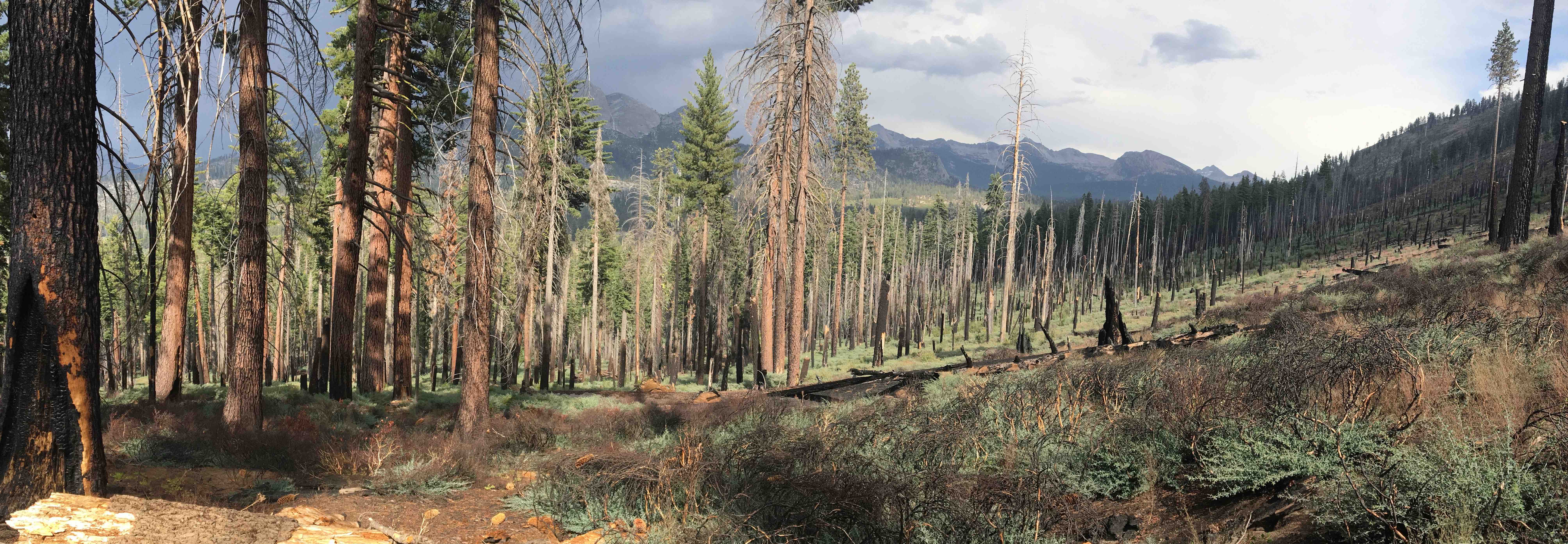 Illilouette Creek Basin, Yosemite
Illilouette Creek Basin, Yosemite
Quantifying pyrodiversity and its drivers
Abstract
Pyrodiversity or variation in spatiotemporal fire patterns is increasingly recognized as an important determinant of ecological pattern and process, yet no consensus surrounds how best to quantify the phenomenon and its drivers remain largely untested. We present a generalizable functional diversity approach for measuring pyrodiversity, which incorporates multiple fire regime traits and can be applied across scales. Further, we tested the socioecological drivers of pyrodiversity among forests of the western United States. Largely mediated by burn activity, pyrodiversity was positively associated with actual evapotranspiration, climate water deficit, wilderness designation, elevation, and topographic roughness but negatively with human population density. These results indicate pyrodiversity is highest in productive areas with pronounced annual dry periods and minimal fire suppression. This work can facilitate future pyrodiversity studies including whether and how it begets biodiversity among taxa, regions, and fire regimes.